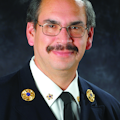This month marks the 10th anniversary of the tragic fire in the Worcester, MA, cold-storage warehouse that took the lives of six firefighters on Dec. 3, 1999. We dedicated our March 2000 issue to the tragedy, focusing on the incident, the recovery efforts and the memorial service that was attended by 35,000 firefighters from around the world as well as by President Bill Clinton, Vice President Al Gore, Senator Ted Kennedy, and numerous other public officials and dignitaries. Please visit Firehouse.com for complete coverage of the 10th anniversary events and updates on the Worcester Fire Department.
This issue has a dual focus — firefighter health and safety and hazardous materials response. In the first category, we provide several articles focusing on the health of firefighters. Dr. Raymond Basri and Eric Bergman take a look at cardiovascular disease in firefighters and the impact that being overweight can have on an individual when performing on the fireground; see Firefighter Health and Wellness on page 40. Mario Treviño, former Seattle, WA, deputy chief and former fire chief in Las Vegas, NV, and San Francisco, CA, reports on the battle he went through for nearly a year after being diagnosed with cancer, waiting to see doctors, treatment, nearly dying and the long recovery process. He relates his firefighting experiences and taking in toxic smoke as to the possible cause of his cancer, from breathing in asbestos, formaldehyde and arsenic readily found in fireground environments. An excerpt from Chief Treviño's article is on page 48 and the entire article may be read on Firehouse.com at http://www.firehouse.com/1209-Trevino-Dance. His was a formidable battle that no one should have to endure. On a personal note, my girlfriend was just diagnosed with cancer. For help and support, I urge you to reach out to the Firefighter Cancer Support Network at www.firefightercancersupport.org.
Next, Chief Jeff Cash, a director of the National Volunteer Fire Council, focuses on the mental stress that firefighters endure during their careers; see page 42. Chief Billy Goldfeder describes an Alaska fire chief who gave of himself for the betterment of his fire department. He lost his battle with cancer, but not before he provided the best training and leadership his members could get. He established an ambulance service in the isolated backwoods of Alaska. He recruited people to answer his response and personnel problems. He also showed them the way to do many things. The entire story of this visionary Alaskan fire chief can be found in this month's Close Calls column on page 30.
We hit the subject of health and safety hard this month. Every one of us knows a firefighter, family member or friend who has been affected by cancer. Great strides have been made over the years in the medical field, but firefighters continue to contract this deadly disease because of the hostile environment we must work in.
Also in this issue, we take a detailed look at three hazardous materials incidents - an explosion that leveled a ConAgra plant in North Carolina; a fuel tanker that overturned on a highway in Colorado, creating problems for first responders and commuters; and our cover story about a fire and explosions in a petroleum storage facility in Michigan.
Our annual Buyer's Guide begins on page 81. This newly updated version is your one-stop shop for the latest in all your fire and emergency service purchasing needs. The 2010 guide is a reference package that can be used throughout the year and at budgeting time. With today's economy and falling revenues creating smaller budgets for the fire service, it is more important than ever to get the most for your budget dollars.
This month's Advanced Rescue Technology features coverage of a river rescue with a twist, as responders sometimes find that a rescue isn't always what it seems. Also featured is an article on command and control of the rescue scene. On the rescue scene, you may be confronted with an event that is technically complex, but you may not have the manpower to establish a large command entity.
For comments, ideas, suggestions, please contact us at [email protected].
About the Author

Harvey Eisner
Editor Emeritus
HARVEY EISNER was named Editor Emeritus of Firehouse® after serving 15 years as Firehouse's Editor-in-Chief. He joined the Tenafly, NJ, Fire Department in 1975 and served as chief of department for 12 years. He was a firefighter in the Stillwater, OK, Fire Department for three years while attending Oklahoma State University. Eisner was an honorary assistant chief of the FDNY and program director for the Firehouse Expo, Firehouse World and Firehouse Central conferences. He covered many major fires and disasters and interviewed numerous fire service leaders for Firehouse®